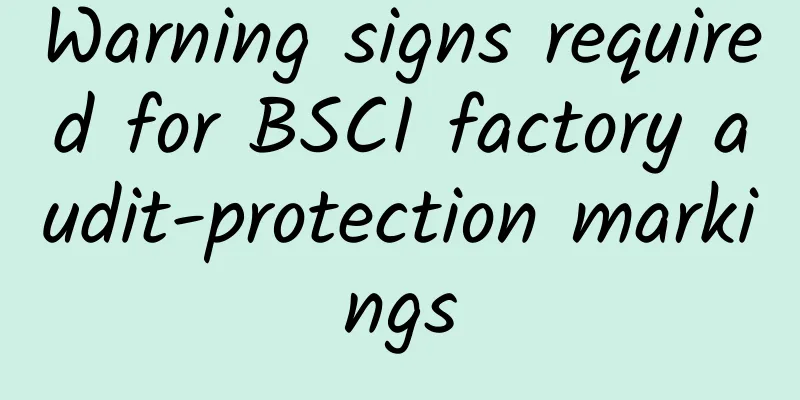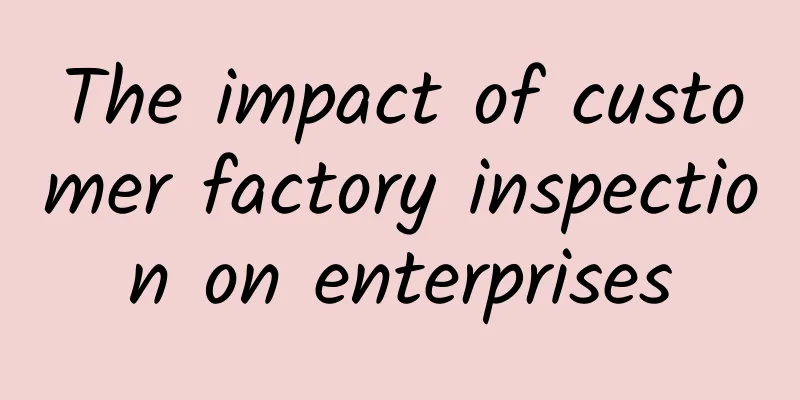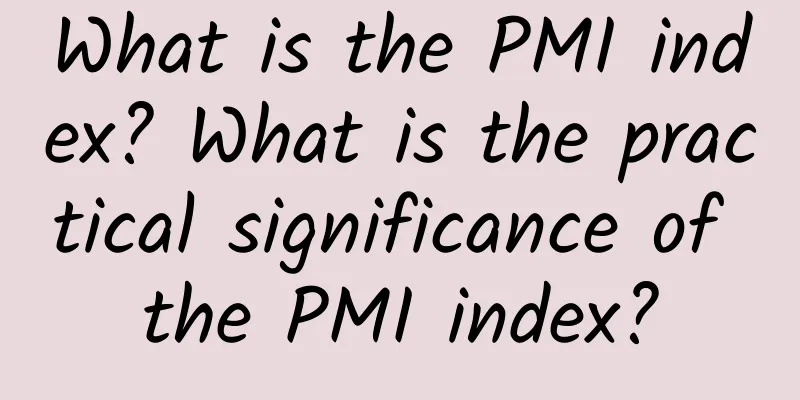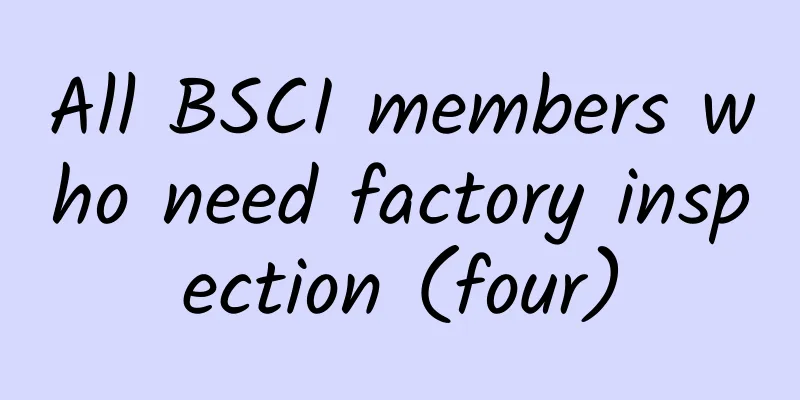Nine eBay operation guidelines for cross-border e-commerce sellers
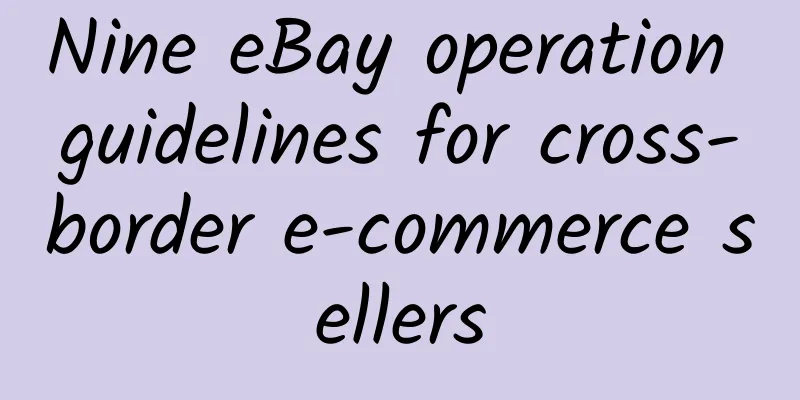
|
As we all know, eBay is one of the world's top retail platforms, and its traffic is not less than Amazon. According to incomplete statistics, eBay has 167 million users, while Amazon has about 87 million users. Therefore, eBay is also a good place for cross-border e-commerce sellers to expand sales and make a lot of money. So how can a newbie sell better on eBay? Stephen will briefly explain below: 1. Create a reputable and rated account. If you're looking to start selling on eBay and you want to make your first buck, Stephen has a reminder for you. Even if they are selling the exact same item, all other things being equal, new sellers will always earn less than experienced sellers. Buyers on eBay have a high level of trust in merchants with ratings and feedback. How do customers determine if a merchant is trustworthy? eBay's measure of "trust" is a feedback rating system. As sellers, we can receive feedback ratings from customers. There are three types of ratings: positive, negative, or neutral. Later, eBay added "Detailed Seller Ratings". Now buyers can rank sellers on specific areas that they do (or don't) do well. Buyers' rankings are also determined by sellers. Here are some tips to improve your eBay feedback rating as quickly as possible if you’re just starting to sell on eBay: 1. Start by selling a lot of small and cheap things. This will allow you to get a lot of positive feedback in a short period of time. For example, many foreigners often start by selling old toys, second-hand goods, etc. 2. Don't wait more than 24 to 48 hours to ship a sold item. Ship at lightning speed. 3. Before the goods are sent out, carefully check whether the products are complete and whether the packaging is damaged, so that they arrive at the seller's location in good condition. 4. If a buyer messages you on eBay, respond promptly and politely. 5. If a buyer is unhappy with an item (if they claim it smells or is not in good condition), don't argue. Simply offer a refund. If the value is very high, ask the buyer to return the item to you first. This filters out scam sellers. One thing to remember is: Recently eBay changed the feedback process so negative ratings are no longer an option. Buyers can only provide positive feedback, or submit a report to eBay. This is a good change for sellers, but buyers are not required to leave positive feedback - so if you want a high rating, you still have to find a way to get customers to leave positive reviews - Negotiation is an art. 2. Learn how to take a picture with soul: Pictures are the soul. When taking pictures, don’t be careless. Junk pictures will only make customers think that they are junk and cannot be sold. Try to improve the quality of pictures to make customers feel that they are worth the money, or at least not low-quality. Regarding pictures, we also have to pay attention to taking pictures by ourselves. Stealing other people's pictures is not a long-term solution. I hope everyone can understand that now the products are seriously homogenized and the pictures are all the same. How can customers choose? So, take pictures by yourself and ask others to take pictures. In the next article, I will introduce several great websites to you. Please continue to pay attention to the official account. 3. Carefully research items that have already been sold Another way to increase your chances of selling an item at a good price is to do in-depth research on how other similar items are selling on eBay. Simply search for the item you want to sell and click the "Sold Items" checkbox in the left-hand menu. This will filter all search results for the same item that has already been sold on eBay. Once the results appear, look for items that are as identical to the item you are selling as possible. Here are some items noted from these top-priced sales to help you better price your own auctions: 1. Try to list your item with a starting price similar to the item that ended up selling for the highest bid. 2. Take similar photos from the same angle. 3. Note down the product description and try to describe your item in a similar way. 4. Check which days of the week have the highest selling items that have ended up on auction and rearrange your items accordingly. Keep in mind that past sales on eBay are a good indicator of what future product sales prices will be. This may be higher or lower than what your own items sell for, depending on your seller feedback rating. It's also important to remember that if people haven't bid on similar items on eBay in the past, then they won't be interested in yours. Don't waste time listing items that are unlikely to sell. 4. Accurate freight setting: In a world where most businesses offer free shipping on their products, many people think that if there is a shipping fee, customers won’t pay. However, as long as you are smart and set the shipping fee, this is not impossible. Utilize the shipping calculator that Ebay provides in your listings. This calculator allows buyers to view accurate shipping costs based on package weight and dimensions as well as the buyer's location. Include it as part of your listing. This way both you and your buyer know their shipping costs won't be excessive. You can also choose to include a small packaging fee, but use this with caution. Buyers have a history of abusing this feature and overcharging for shipping to increase their profits. This rarely works and will only reduce the likelihood of your item selling. If you're feeling daring, consider offering free shipping to areas of your country. Most of the time, this will increase the number of bidders on your auction and will usually increase the final auction price as well. 5. Avoid transaction fees to increase profits eBay has changed its fee structure over the years. Before, you had to pay 25 cents for anything you listed, and pay an "insertion fee." This was the base price for listing an item on eBay. eBay got smarter and eventually realized that if the listing fees were a little lower it would attract more sellers, so they started offering a certain number of "free insertion fee" listings each month. Standard users get 50 free fixed-price or auction listings Basic Store users get 250 fixed price and 250 auction listings Premium Store users get 1,000 fixed-price and 500 auction listings Anchor Store users get 10,000 fixed-price and 1,000 auction listings When your item ultimately sells, you pay your fees. If the item sells for between $0.99 and $50.00, eBay will charge 8% of the final sale price. These fees are set for each listing, so how can you reduce your overall eBay costs? You can do this by avoiding the options under “More Options” on the listing form. When you change anything from the default settings, you may incur additional charges on top of the normal Final Value charges. Here are some add-on services you might choose that could increase your eBay fees. 1. Use a 1 or 3 day “special period” for your auction listings 2. Listing in multiple categories will double your insertion fee 3. Promoted listings are a way to promote your listings on eBay, but you will need to pay extra for this 4. Global Shipping Program 5. Setting up specific custom return options may incur additional fees Make sure you understand all of the fees you choose to pay so that your eBay listing costs are as low as possible and your bottom line profit is as high as possible. 6. Schedule auctions based on product type Another thing that may affect the final sales price is the day of the week your auction ends. You’ll find a lot of people searching online for the best day to end an eBay auction. They’re actually asking the wrong question. The question you should ask is what day of the week is best to end the auction for the type of items you are selling. In fact, an office worker buying office equipment will shop on different days of the week than someone who might be an antique collector. These different shoppers have different lifestyles and different online shopping habits. When you want to list an item, first search for the type of item you plan on selling. Make sure to filter for "Sold" items only as described above. Then choose to sort the results by highest price. Go through the results and see if you can pick a pattern that shows the most common days these types of items sell for the highest price. Most of the time, you'll really find a common pattern based on the category of products you're selling. This is the day of the week (or days) you should focus on when listing your own items for sale. 7. Save time by restating descriptions As part of your research on similar items that have sold on eBay, take note of the highest-priced sales and look closely at how the seller describes their item. There's nothing wrong with copying that description into your description field and using it as a template for your own item description. Just make sure to completely rewrite the description so that it accurately describes your own item, including all its imperfections and flaws. You shouldn't plagiarize someone else's, but using a successful seller's formatting template will give you a good head start, and it will save you a lot of time. 8. Use of Template Disclaimer A few mistakes that new sellers make when starting out can end up costing a lot of money. 1. Inspect your items for any minor defects, including signs of wear and tear, torn fabric, imperfect stitching, or other items that buyers notice when they open the shipping box. 2. Include a disclaimer regarding wear and tear. It should go without saying that a "used" item will appear used. Unfortunately, some buyers have unrealistic expectations. If you fail to mention defects or fail to mention that your used items will have normal wear and tear, then you can file a complaint with the buyer and ask for a refund. One safe defense against this is to write, as part of your sales template, that all used items will have expected defects with age. These statements in your listings will keep away most buyers who are just looking to get the item for free. Also, a good, fair return policy that requires the buyer to pay for return shipping for a full refund is usually an excellent deterrent to scammers as well. 9. Become a PowerSeller Becoming an eBay "PowerSeller" is a fast track to increasing your eBay profits, but it's not easy. PowerSeller status is hard to earn. It means you have to be very serious and provide a top-notch quality experience to your buyers. You don't need to actively apply for PowerSeller. Ebay only identifies you as a PowerSeller based on your statistics. There are three factors that determine a PowerSeller on eBay. 1. Maintain a positive rating of over 98% 2. You have sold more than 100 items with sales of more than $3,000 in the past 12 months 3. You have been on eBay for at least 90 days. You can learn all about achieving PowerSeller status at the eBay support page for PowerSellers. |
<<: How is Hongfeng Investment? What services does Hongfeng Investment provide?
Recommend
Basic requirements of ISO9000 system certification family
Product quality is the key to the survival of an ...
What is eBay's Qianfan Plan? What content does eBay's Qianfan Plan support?
What is eBay's Qianfan Plan? The core of the ...
LI&Fung Company Profile
LI&Fung Company Profile LI&Fung was found...
The development of FSC forest certification in China
In 1999, FSC issued the first CoC certificate in ...
International Sustainability and Carbon Certification ISCC Certification Features
ISCC certification is applicable worldwide and co...
SEDEX Membership Guidelines Terms
SEDEX Membership Guidelines Terms Class A Member ...
How to upload pictures on eBay?
You must upload at least one picture when listing...
What is eToro? What does the eToro social investing platform do?
eToro is the world's leading social investmen...
ICTI New Content
ICTI New Terms Section 1: General Guidelines 1.1 ...
What is Corten Logistics? What services does Corten Logistics provide?
Corten Logistics specializes in providing secure ...
eBay removes bad transaction records
eBay will automatically remove bad transaction re...
What is Xingyun? What are its advantages?
What is Xingyun? XingCloud: In 2010, in order to ...
Latest report: Global recycled plastics market valued at $43.5 billion in 2026!
According to the latest report released by Market...
“Whether companies like it or not, the era of green manufacturing has arrived”
"During the 14th Five-Year Plan period, gree...
Puma factory inspection requirements for apprentices, minors and child labor
In addition to health and safety aspects, the soci...
